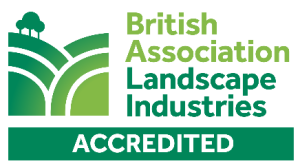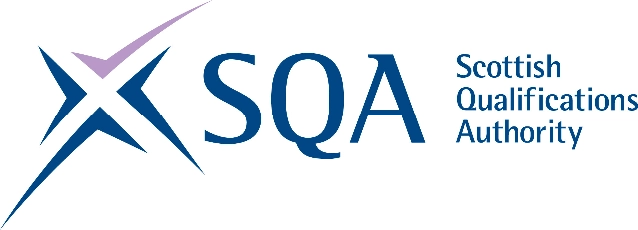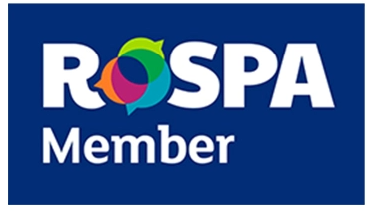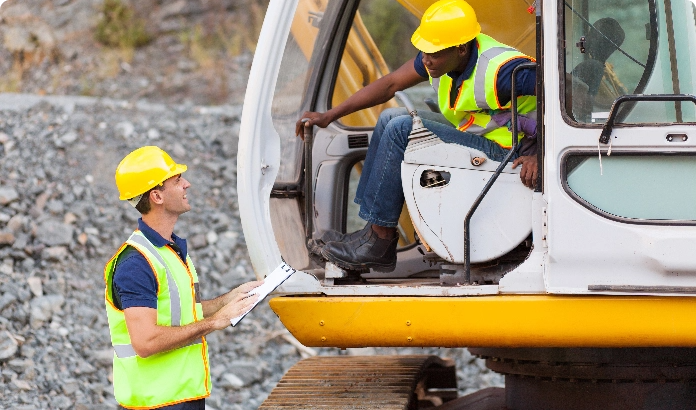Safety Training Courses
Our safety training courses ensure that all individuals will be proficient in answering questions on the relevant topics, and capable of performing the required tasks upon completion of each category. Find out more details below:
Section 1 – Working at Height and Lifting Equipment
Harness Use and Inspection
- Understanding the potential dangers of working within the industry and his/her appropriate obligations
- Comprehending the contents of the harness’ handbook
- Identifying the major parts of the harness and outlining each function
- Selecting the correct harness for the job in hand
- Carrying out all applicable safety checks on the harness prior to use
- Choosing the right safety equipment to complement the wearing of the harness, and fitting accordingly
- Understanding all environmental concerns
- Correctly removing the harness, performing end of work checks, and demonstrating the ability to store the harness properly
- Working at Height Regulations
- Comprehending the definition of working at height, i.e. working above ground or floor level, or operating where the individual could fall through an opening from either ground level, or an edge above ground level
- Acknowledging there are areas where ‘working at height’ is not relevant, such as falling on the level or on a fixed staircase
- Depending on the individual’s response to this course, further training may be required.
Mobile Towers
- Understanding the legislation relating to this particular industry, the dangers of operating therein, and the individual’s responsibilities
- Comprehending the contents of the mobile scaffold’s handbook Identifying the major parts of the mobile scaffold and outlining each function
- Selecting the correct mobile scaffold for the job in hand
- Carrying out all applicable safety checks on the mobile scaffold prior to use, and erecting accurately
- Choosing the right safety equipment to complement the use of the mobile scaffold, and fitting accordingly
- Understanding all environmental concerns
- Correctly dismantling the mobile scaffold, performing end of work checks, and demonstrating the ability to reposition or store the mobile scaffold properly
- Mobile Elevated Work Platforms (MEWPs)
- Understanding the legislation relating to this particular industry, the dangers of operating therein, and the individual’s responsibilities
- Comprehending the contents of the relevant platform’s handbook Identifying the major parts of the MEWP and outlining each function, including steering, driving and braking operations
- Correctly performing all completion procedures
Industrial Forklift Trucks
- Understanding the potential dangers of working within the industry and his/her appropriate obligations
- Comprehending the contents of the forklift’s handbook
- Identifying the major parts of the forklift and outlining each function, including mounting, dismounting, operating, steering, driving and braking operations
- Completing a daily checklist as per recommendations and legislation
- Demonstrating the skills to manoeuvre and operate the forklift in both tight and open areas
- Indicating the ability to load and unload a vehicle, and at various levels
- Correctly performing all completion procedures
- Overhead Gantry Cranes
- Understanding the potential dangers of working within the industry and his/her appropriate obligations
- Completing a daily checklist as per recommendations and legislation
- Conducting pre-operation and relevant checks as per instructions and legislation
- Preparing the overhead gantry crane for use and proving the ability to operate the machine in an appropriate manner
- Understanding all environmental concerns
- Correctly performing all completion procedures
Slinger/Signaller
- Understanding the potential dangers of working within the industry and his/her appropriate obligations
- Comprehending the contents of relevant handbooks Completing a daily checklist as per recommendations and legislation
- Indicating comprehension of the location and identification of various lifting equipment and accessories, explaining the construction and functions of each
- Proving the ability to understand relevant instructions and documentation
- Undertaking all initial checks on non-specialist lifting equipment and identifying unusable items, explaining the procedures for removing same from service
- Understanding and explaining centres of gravity and calculating the estimated weight of loads
- Setting up an exclusion zone
- Choosing the right safety equipment to complement the job in hand, and fitting accordingly
- Securing selected loads to a hook using the lifting accessories to hand, outlining the correct procedures to maintain balance, integrity and security
- Directing and guiding the movement of loads to pre-arranged locations using several forms of communication
- Understanding all environmental concerns
- Correctly performing all completion procedures
Mobile Crane
- Understanding the potential dangers of working within the industry and his/her appropriate obligations
- Comprehending the contents of the mobile crane’s handbook
- Completing a daily checklist as per recommendations and legislation
- Identifying the major parts and key controls of the mobile crane, and outlining each function
- Setting up an exclusion zone
- Choosing the right safety equipment to complement the job in hand, and fitting accordingly
- Preparing the mobile crane for use and proving the ability to operate the machine correctly
- Understanding all environmental concerns
- Correctly performing all completion procedures
Lorry Mounted Lift Truck
- Understanding the potential dangers of working within the industry and his/her appropriate obligations
- Comprehending technical data as per regulations and legislation
- Identifying the major parts of the machine and outlining each function, including mounting, dismounting, operating, steering, driving and braking operations
- Completing a daily checklist as per recommendations and legislation
- Demonstrating the skills to prepare the machine for travel, and manoeuvring it across level, rough and elevated terrains in both tight and open areas
- Indicating the ability to load and unload a vehicle, and at various levels
- Identifying and detailing safe working loads and various lifting procedures
- Understanding and explaining centres of gravity and calculating the estimated weight of loads
- Understanding all environmental concerns
Telescopic Suspended Load
- Understanding the potential dangers of working within the industry and his/her appropriate obligations
- Comprehending technical data as per regulations and legislation
- Identifying the major parts of the machine and outlining each function, including mounting, dismounting, operating, steering, driving and braking operations
- Completing a daily checklist as per recommendations and legislation
- Demonstrating the skills to prepare the machine for travel, and manoeuvring it across level, rough and elevated terrains in both tight and open areas
- Indicating the ability to load and unload a vehicle, and at various levels
- Identifying and detailing safe working loads and various lifting procedures
- Understanding and explaining centres of gravity and calculating the estimated weight of loads
- Understanding all environmental concerns
- Communicating with the slinger/signaller in order to confirm signals and codes, directions and landing zone of load in transit
Section 2 - SQA
Confined Space Qualifications
These courses cover all preparations necessary to approach the working area safely, using relevant equipment and tools, following appropriate procedures, dealing with emergencies, and exiting the confined space properly.
Water
Confined Spaces Prone to Flooding
Drain and Sewer Cleaning
Potable Water
Sewage Treatment
Non-Water
Aeronautical
Asbestos Removal
Communications
Construction
Electrical Engineering
Gas
Mechanical Engineering
Mine Operations
Petrochemical
Pharmaceutical
Power
Quarry Operations
Tunnelling Operations
Utilities
Vehicle Manufacture
Vehicle Servicing
Working in low risk confined spaces – Level 2 (1 day course)
Explanation of The Confined Spaces Regulations 1997, and approved codes of practice
Confined spaces definition and the classification of same, whether within the water industry or the national occupational standard
Potential risks and workplace safety
How to implement a safe system of work
Preparation and acknowledgement of a method statement
Application of permits to operate control measures
Pre-planned emergency procedures and the proper safety equipment required
How to detect gas and access proper ventilation
First aid and appropriate hygiene
Working in medium risk confined spaces – Level 2 (2 day course)
Explanation of The Confined Spaces Regulations 1997, and approved codes of practice
Confined spaces definition and the classification of same, whether within the water industry or the national occupational standard
Potential risks and workplace safety
How to implement a safe system of work
Preparation and acknowledgement of a method statement
Application of permits to operate control measures
Pre-planned emergency procedures and the proper safety equipment required
How to detect gas and access proper ventilation
First aid and appropriate hygiene
Escape sets and the relevant equipment
Traversing – easy vertical entry
Working in high risk confined spaces – Level 3 (3 day course)
Explanation of The Confined Spaces Regulations 1997, and approved codes of practice
Confined spaces definition and the classification of same, whether within the water industry or the national occupational standard
Potential risks and workplace safety
How to implement a safe system of work
Preparation and acknowledgement of a method statement
Application of permits to operate control measures
Pre-planned emergency procedures and the proper safety equipment required
How to detect gas and access proper ventilation
First aid and appropriate hygiene
Escape sets and the relevant equipment
Traversing – easy vertical entry
Self-contained breathing apparatus – SCBA
Breathing apparatus entry control
Section 3 – Health and Safety in a Construction
Register of Land-based Operations (ROLO) courses (Qualification required for CSCS & LISS Card)
Understanding the potential dangers of working within the industry and his/her appropriate obligations regarding legislation, along with those of his/her employers
Complying with the Health and Safety at Work etc. Act 1974, HSE laws, and the regulations outlined by
Control of Substances Hazardous to Health (COSHH)
Fully comprehending potential dangers and workplace safety including electricity, gas and fire
Showing ability to ascertain the relevant risks in the workplace and carry out a risk assessment
Proposing a suitable system of safety to avoid potential dangers in the workplace
Identifying the types of PPE used in construction and outlining the proper use of each item
Understanding how to work with heavy loads, chemicals and various on-site hazards
Applying for the Construction Skills Certification Scheme (CSCS) card
Evacuation Marshal/Banksperson
Understanding the potential dangers of working within the industry and his/her appropriate obligations
Choosing the right safety equipment to complement the job in hand, and fitting accordingly
Outlining all types of underground services
Acknowledging the various correct apparatuses to be used and being fully aware and cognisant of the correct legislation and documentation
Communicating with the relevant parties in order to confirm signals, codes and directions
Carrying out pre-excavating checks, including identifying potential risks and relevant safe practices
Understanding all environmental concerns
Ensuring one’s safe positioning
Correctly performing all completion procedures
Vehicle Marshall
Understanding the potential dangers of working within the industry and his/her appropriate obligations
Comprehending the contents of the particular vehicle’s handbook Choosing the right safety equipment to complement the job in hand, and fitting accordingly
Communicating with the relevant parties in order to confirm signals, codes and directions
Completing a safety checklist as per recommendations and legislation
Setting up an exclusion zone
Successfully guiding all vehicles and machinery within confined spaces and blind spots
Understanding all environmental concerns
Correctly performing all completion procedures
Section 4 – Tools and Equipment
Abrasive Wheels (Angle Grinders, Bench Grinders, etc.)
Understanding the potential dangers of working within the industry and his/her appropriate obligations
Comprehending the contents of the abrasive wheels’ handbooks and relevant legislation
Identifying the major parts of the abrasive wheels and outlining each function
Carrying out all applicable safety checks on the abrasive wheels prior to use
Choosing the right safety equipment to complement the job in hand, and fitting accordingly
Selecting the appropriate blades relevant to the work being carried out
Carrying out all applicable safety checks prior to use and setting up an exclusion zone
Preparing the abrasive wheels for use and operating same in an effective and safe manner
Understanding all environmental concerns
Proving the ability to store and transport the abrasive wheels correct
Correctly performing all completion procedures
Chainsaw Maintenance and Cross Cutting
Understanding the potential dangers of working within the industry and his/her appropriate obligations.
Comprehending the contents of the chainsaws handbook and relevant legislation.
Identifying the major parts of the chainsaw and outlining each function.
Carrying out all applicable safety checks on the chainsaw prior to use.
Choosing the right safety equipment to complete the job in hand.
Carrying out all applicable safety checks prior to use and setting up an exclusion zone.
Preparing the chainsaw for use and operating same in an effective and safe manner.
Understanding all environmental concerns
Proving the ability to store and transport the chainsaw correctly performing all completion procedures.
Cable Avoidance Tools (Cat and Genny)
Understanding the potential dangers of working within the industry and his/her appropriate obligations.
Comprehending the contents of the cable avoidance tools handbook and relevant legislation.
Identifying the major parts of cable avoidance tool and outlining each function.
Carrying out all applicable safety checks on the cable avoidance prior to use.
Choosing the right safety equipment to complement the job in hand.
Selecting the appropriate blades relevant to the work being carried out.
Carrying out all applicable safety checks prior to use and setting up an exclusion zone.
Proving the ability to store and transport the cable avoidance correct
Correctly performing all completion procedures.
Understanding how to read utility drawings and having an awareness of HSG 47
Hand Tools (Small Tools, Breakers, Wackers, Stihl Saws, etc.)
London & Kent Safety Training conducts this part of our health and safety training courses under the legislation outlined in the Provision and Use of Work Equipment 1998 (PUWER).
As so many hand held tools are used in the construction industry and beyond on a daily basis, it is a legal requirement for all individuals using such apparatuses to undergo the appropriate training to ensure they use the tools competently.
For example:
- Strimmers and Hedge Trimmers
- Understanding the potential dangers of working within the industry and his/her appropriate obligations
- Comprehending the contents of the handbook relating the tools’ handbooks and relevant legislation
- Identifying the major parts of the relevant strimmers and trimmers and outlining each function
- Carrying out all applicable safety checks on the strimmers and trimmers prior to use
- Selecting the most suitable strimmer or trimmer for the job in hand
- Choosing the right safety equipment to complement the job in hand, and fitting accordingly
- Preparing each strimmer and trimmer for use
- Comprehending potential accidents that may occur and carrying out the necessary safety checks
- Operating both strimmers and trimmers safety and efficiently
- Using the strimmers and trimmers at various heights
- Understanding all environmental concerns
- Proving the ability to store and transport the strimmers and trimmers correctly
- Disposing of all excess waste appropriately
- Correctly performing all completion procedures
Section 5 – Ancillary Courses
First Aid at Work (1 day course)
- Understanding of the individual’s role as an Occupational First Aider
- Showing with competence the abilities to preserve life by providing the appropriate treatment
- Minimising the risk of future injury until such time as the relevant medical assistance arrives
- Carrying out first aid treatments in cases where medical assistance is not required
- Indicating familiarity with the proper Health & Safety legislation regarding first aid in the workplace
Fire Marshall
- Understanding the basic principles of fire safety in the workplace and the role of a fire warden
- Showing comprehension of the term ‘fire’ and how it spreads
- Assessing all potential risks and maintaining fire prevention principles
- Proving the abilities to control a fire once started and extinguish same effectively
- Carrying out the appropriate emergency procedures and identifying the most efficient means of escape
Asbestos Awareness Training
- Identifying the potential sources of asbestos and understanding the risks involved regarding exposure to same
- Recognising the various types of asbestos, asbestos containing materials, and the areas in which the materials may be found
- Comprehending the correct course of action regarding discovery of asbestos
- Controlling the situation once asbestos has be discovered and maintaining the proper health surveillance
- Understanding the current legislation in place which outlines the responsibilities of both employee and employer in this regard, including the following:
- Health & Safety at Work Order (NI) 1978
- The Control of Asbestos Regulations (NI) 2007
- The Hazardous Waste Regulations (NI) 2005
- Control of Substances Hazardous to Health Regulations
- Management of Health & Safety at Work Regulations
- Personal Protective Equipment Regulations
Manual Handling
- Understanding the potential dangers of working within the industry and his/her appropriate obligations
- Comprehending the term ‘manual handling’ and identifying the main causes of relevant injuries
- Acknowledging the need for all parties to partake in manual handling training
- Describing the function of both the human spine and the intervertebral discs
- Outlining the effects of static loading and understanding the necessity for co-ordination in areas of teams lifting
- Demonstrating risk assessments, conducting safety checks, and identifying the appropriate safety equipment to be used, if necessary
- Describing and displaying correct manual handling procedures
Our Courses
What our customers say
Accreditations
London & Kent Safety Training AT Ltd holds the appropriate public and employers’ liability insurance for our area of expertise, and we are also members of the following organisations:







Get in touch
Our health and safety, plant operator, streetwork and EUSR courses are updated regularly to remain in line with current accreditations. If required, and depending on location and travel, London & Kent Safety Training’s qualified instructors can facilitate training courses quickly but we do not conduct an emergency service.




